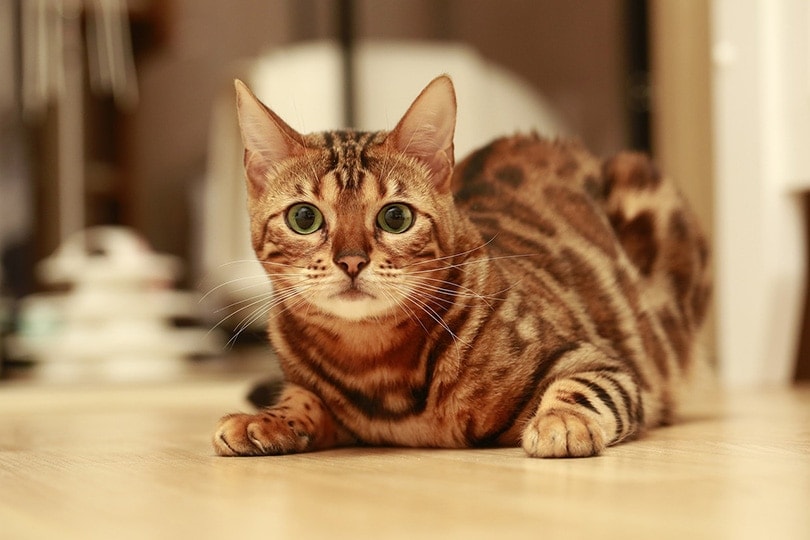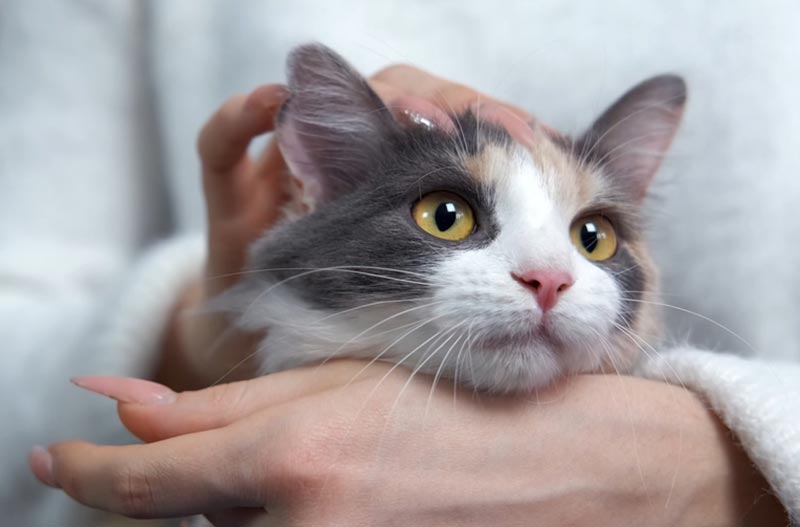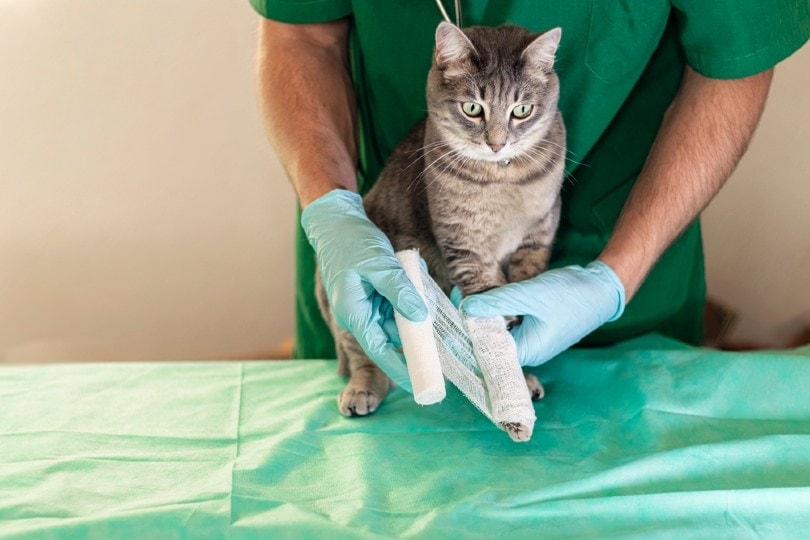Do Cats Purr When They Are Nervous or Stressed?
Updated on

One of the most pleasurable things about being a cat owner is when your pet curls up next to you and purrs as you stroke it. You know your kitty loves you and confirms it with this vocalization. However, research suggests other reasons can be behind the purring. It’s true that contentment is one. However, stress and anxiety can also cause this behavior.
Scientists have uncovered some fascinating evidence about purring that may surprise you. Like other forms of communication, it serves several possible functions that are as varied as there are cat personalities.
Purring Defined
You may not have considered how your pet purrs, but biology reveals how it happens. When your kitty vibrates its voice box or larynx, muscles within this structure cause the opening between its vocal cords—or glottis—to open and close quickly and resonate. The sound you hear is the result of this action. Scientists know these muscles cause it because the animal can’t purr if these muscles are paralyzed.
The interesting thing about purring is that it happens during inhalation and exhalation since both actions play a role in the vibration of the involved structures. It differs from the 20 other vocalizations that domestic cats can make. Not surprisingly, purring is one of the most researched of all the sounds that our pets produce. The next question is, why do cats purr when nervous or stressed?

The Reason Behind the Purr
It’s essential to start with the evolutionary role of the purr. Felines are born altricial, meaning they need their mothers’ help to survive. It’s easy to understand if we put it in context. The female must hunt to bring food back to her young. Cats rely on stealth to capture their prey, and a slew of kittens meowing would make it impossible to accomplish. The young waiting for her in a den makes it more likely.
Nevertheless, the mother and her kittens are vulnerable. Purring occurs at a lower frequency than mewing, making it harder for would-be predators to hear. It can also hide a crying sound within it so that the mother can still hear the pleas for food from her young. Purring does double duty to protect the mother and the kittens to increase their chances of survival.
Both scenarios provide ample evidence that purring can occur during stressful times. However, there’s more to the story. Scientists aren’t sure if this sound is voluntary or involuntary. It is clear that a cat can control it based on the situation and the emotions it’s experiencing at a given time. That makes sense since the animal’s respiration varies based on environmental stimuli and its perception of them.
Purring and Healing
You may notice that your cat also purrs when it’s stressed, like during that annual visit to the vet. Scientists have discovered another benefit of this vocalization that doesn’t involve pet owners or litters of kittens. Research has shown that low-frequency vibrations can help heal fractures. The best improvements are seen with 25 Hz and 50 Hz frequencies, both in line with purring.
It’s no stretch to say that a feline with a broken leg experienced a lot of stress. Purring may have evolved to help felines heal quicker to survive. However, that begs another question: can other species purr, too?

Purring versus Roaring
First, we must distinguish between purr and purring. We often use the former to describe similar sounds that remind us of the sounds that cats make. Scientists also use it when talking about vocalizations other animals use. Therefore, when we say purring, we are referring specifically to the vibrating sound our pets make.
While other animals may make vocalizations, only species in the Felidae and Viverridae engage in purring. That also includes lynxes, bobcats, and cougars. In the cat world, you either purr or roar, but not both. The anatomical differences between big cats like lions and leopards make it impossible for them to make the same sound as your kitty curling up next to you on the sofa.
However, even differences exist even among the big cats. For example, tigers make a kind of pseudo-roar that sounds more like growling than roaring. Cheetahs also have a distinct chirping vocalization. It’s worth noting that a lion’s roar can travel 5 miles, while you can hear a vocal tiger 2 miles away. That points to the divergent function of these vocalizations.
Big cats roar as a form of communication to mark their territories. Another feline hearing the sound would know an area is occupied. It makes evolutionary sense, too. A fight between two angry felines probably will end in potentially life-threatening injuries or even death. The loud roar is the feline version of a shot over the bow and a warning to a would-be interloper.
Final Thoughts
Purring is a unique vocalization among cats of all sizes. It communicates so much information, whether it’s your kitty showing affection or a kitten begging its mother for food. It also has a healing function, making it a potentially valuable survival adaptation for smaller species. The sound your pet makes is a holdover from this evolutionary purpose that has evolved with domestication.
Featured Image Credit: lshman000, Pixabay












